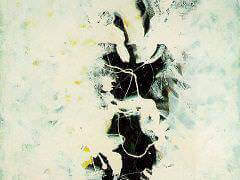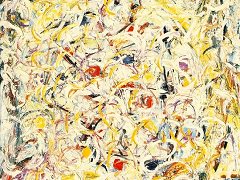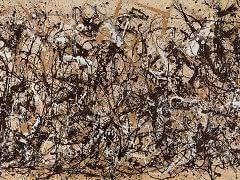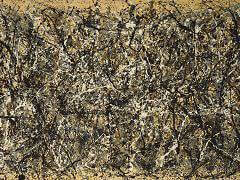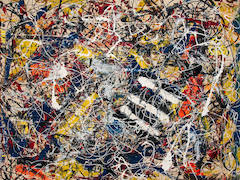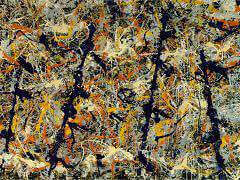Number One, 1950 (Lavender Mist) by Jackson Pollock
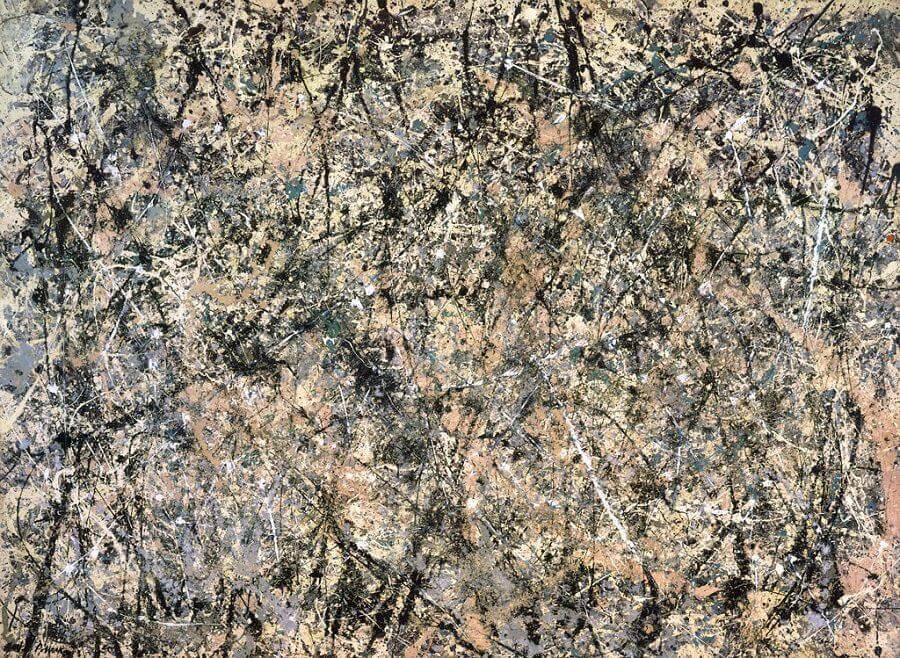
A 1945 exhibition at the Pierre Matisse Gallery may have been what gave fresh impetus to the development of Jackson Pollock's distinctively linear allover format later. This show, which had an important impact on the American
wartime art scene, consisted of small gouaches by Joan Miro recently smuggled out of occupied France. Comprised of scattered cartoon-like forms connected by a thin tracery of autonomous lines,
these works were called Constellations, invoking a stellar metaphor. Pollock had cited that Miro as an artist he admired most, other than
Picasso. Some art critics flatly declared Miro to be a direct precursor of the type of works Pollock was doing later.
Number One, 1950 (Lavender Mist) embodies the artistic breakthrough Pollock reached between 1947 and 1950. It was painted in an old barn-turned-studio next to a small house on the East End of Long Island, where Pollock
lived and worked from 1945 on. The property led directly to Accabonac Creek, where eelgrass marshes and gorgeous, watery light were a source of inspiration for him.
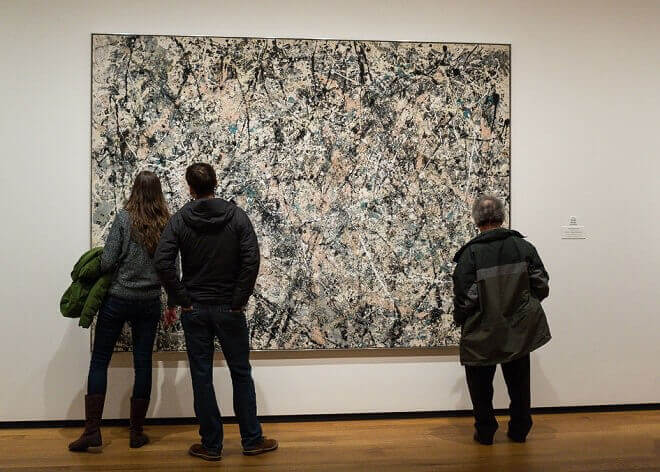
Pollock's method was based on his earlier experiments with dripping and splattering paint on ceramic, glass, and canvas on an easel. Now, he laid a large canvas on the floor of his studio barn, nearly covering the space. Using house paint, he dripped, poured, and flung pigment from loaded brushes and sticks while walking around it. He said that this was his way of being "in" his work, acting as a medium in the creative process. For Pollock, who admired the sand painting of the American Indians, summoning webs of color to his canvases and making them balanced, complete, and lyrical, was almost an act of ritual. Like an ancient cave painter, he "signed" Lavender Mist in the upper left corner and at the top of the canvas with his handprints.



